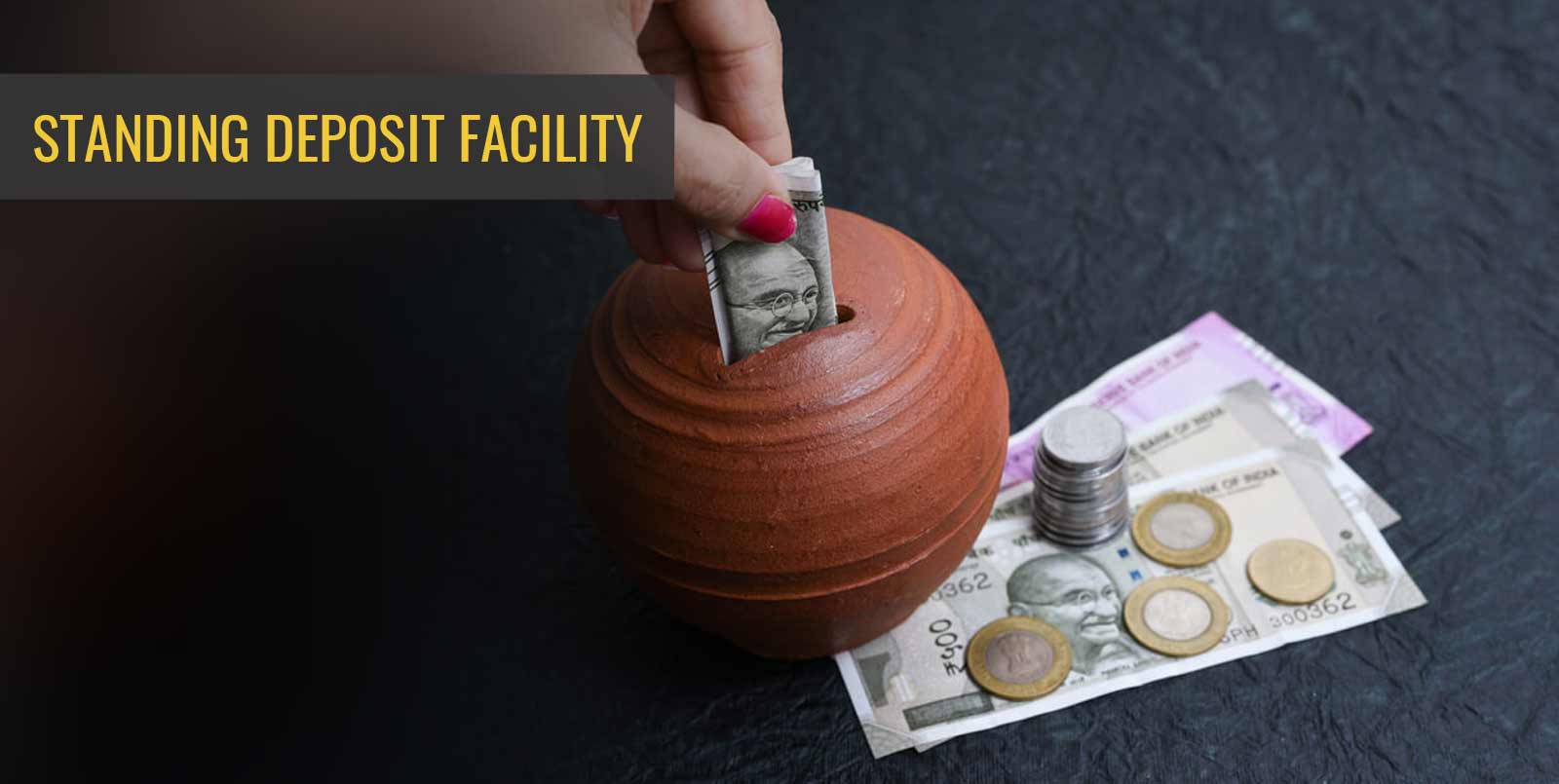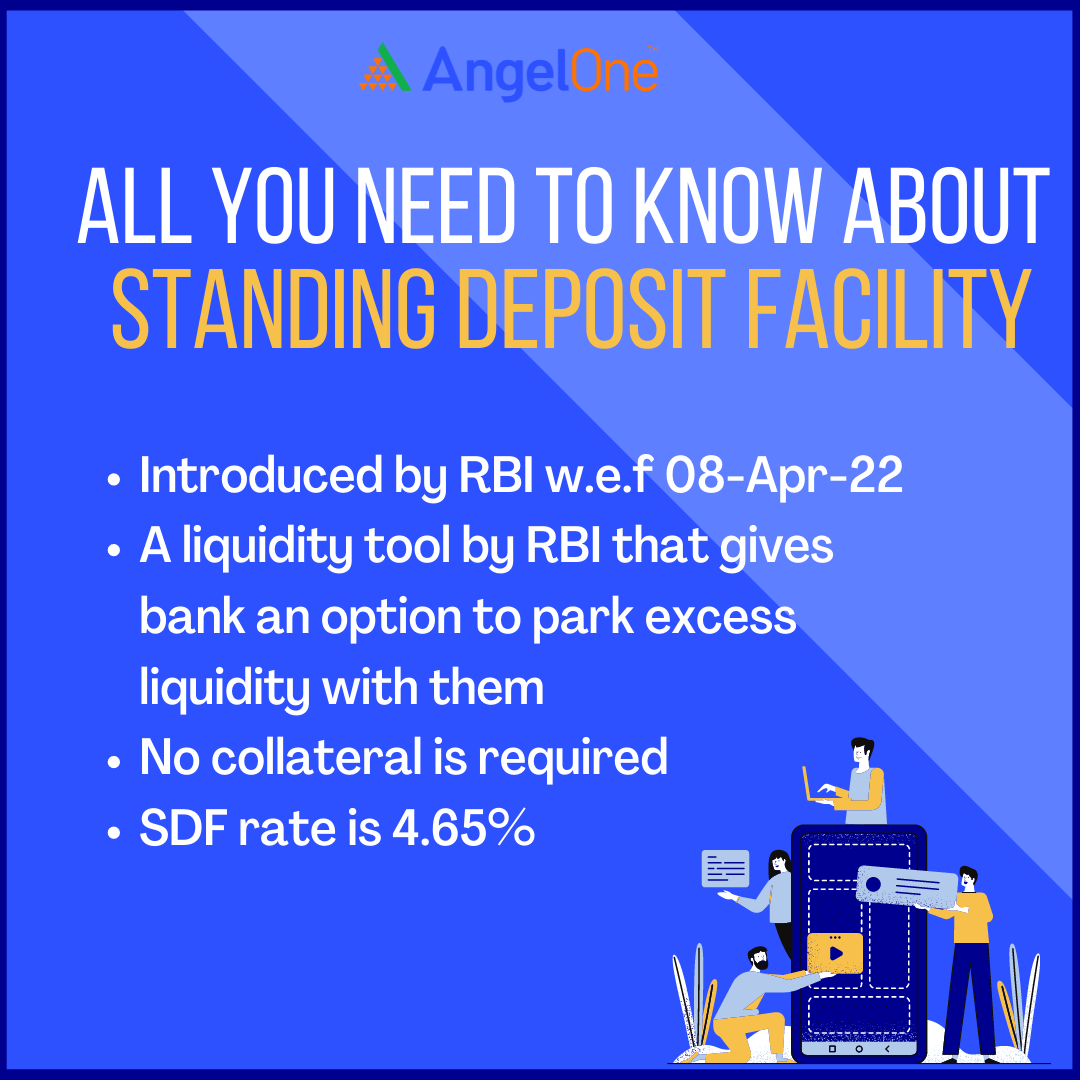

You might have come across Standing Deposit Facility (SDF) while going through the news. Now you must be wondering what it is and why RBI has introduced this additional tool for absorbing liquidity, right? Well, read through with us to know all about SDF.
Introduced by RBI w.e.f 08-Apr-22, SDF is a liquidity tool that gives banks an option to park access liquidity with them. However, unlike the reverse repo facility, you don’t need to provide collateral while depositing funds with RBI.
As per RBI’s statement, the SDF rate as on 20-July-2022 is 4.65% i.e. 140 basis points below the reverse repo rate of 3.25% and all the participants are eligible for LAF (Liquidity Adjustment Facility) (explained below) will be eligible for SDF too.

Following are the salient features of SDF.
The introduction of SDF has surely raised one big question how does it impact liquidity. Before we understand how is it going to absorb the liquidity, let’s know what has led to increased liquidity. Below-mentioned is a few of the probable reasons that have led to an increase in liquidity.
SDF gives the flexibility for surplus liquidity management as it removes the binding constraint on RBI to show government securities on the balance sheet. How? For every SDF, there will be two entries on the balance sheet – on the liability side (currency-in-circulation) and on the assets side under net claims on banks. This nullified impact on the RBI balance sheet gives more opportunity to RBI to absorb surplus liquidity.
Conclusion
SDF is a monetary tool that allows banks to park their access liquidity with RBI without any collateral. RBI has introduced this tool to absorb excess liquidity in the market as it plays an important role in determining the policy rates. You must know that this change in policy rates impacts the rates on your deposits and loans. Thus, it is imperative for you to keep an eye on the SDF rate along with the repo rate and others.
Notes:
Disclaimer: This blog is exclusively for educational purposes.
Published on: Aug 10, 2022, 12:48 PM IST
We're Live on WhatsApp! Join our channel for market insights & updates